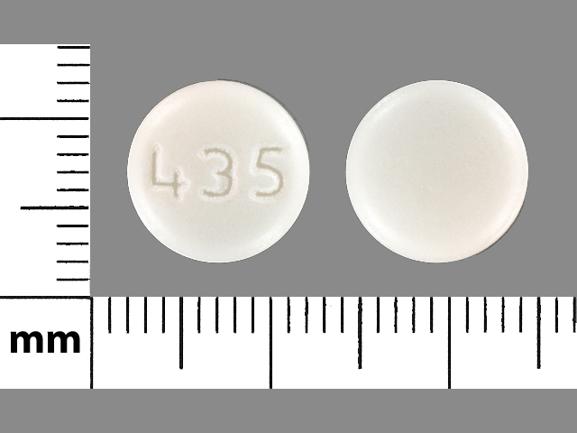Acamprosate Side Effects
Medically reviewed by Drugs.com. Last updated on Apr 22, 2024.
Applies to acamprosate: oral tablet delayed release.
Serious side effects of Acamprosate
Along with its needed effects, acamprosate may cause some unwanted effects. Although not all of these side effects may occur, if they do occur they may need medical attention.
Check with your doctor immediately if any of the following side effects occur while taking acamprosate:
More common
- Extreme feeling of sadness or emptiness
- fear
- severe depression
Symptoms of Overdose
Get emergency help immediately if any of the following symptoms of overdose occur while taking acamprosate:
- Abdominal pain
- confusion
- constipation
- diarrhea
- dry mouth
- headache
- incoherent speech
- increased urination
- metallic taste
- muscle weakness
- nausea
- thirst
- unusual tiredness
- vomiting
- weight loss
Other side effects of Acamprosate
Some side effects of acamprosate may occur that usually do not need medical attention. These side effects may go away during treatment as your body adjusts to the medicine. Also, your health care professional may be able to tell you about ways to prevent or reduce some of these side effects.
Check with your health care professional if any of the following side effects continue or are bothersome or if you have any questions about them:
More Common
- Discouragement
- feeling sad
- irritability
- lack of appetite
- lack or loss of strength
- loss of interest or pleasure
- nervousness
- sleeplessness
- tiredness
- trouble concentrating
- trouble sleeping
Less common
- Accidental injury
- bloated or full feeling
- burning, crawling, itching, numbness, prickling, "pins and needles", or tingling feelings
- dizziness
- dry mouth
- excess air or gas in stomach or intestines
- itching skin
- pain
- passing gas
- sweating
For Healthcare Professionals
Applies to acamprosate: oral delayed release tablet.
General
The most commonly reported side effects included diarrhea, insomnia, anxiety, depression, and asthenia.[Ref]
Gastrointestinal
Very common (10% or more): Diarrhea (up to 17%)
Common (1% to 10%): Abdominal pain, constipation, dry mouth, dyspepsia, flatulence, nausea, vomiting
Uncommon (0.1% to 1%): Dysphagia, eructation, esophagitis, gastritis, gastroenteritis, gastrointestinal hemorrhage, hematemesis, nausea and vomiting, pancreatitis, rectal hemorrhage
Rare (0.01% to 0.1%): Abdomen enlarged, ascites, cholecystitis, colitis, duodenal ulcer, increased salivation, melena, mouth ulceration, stomach ulcer[Ref]
Nervous system
Common (1% to 10%): Amnesia, dizziness, headache, paresthesia, somnolence, syncope, taste perversion, tremor
Uncommon (0.1% to 1%): Convulsion, hypesthesia, migraine, neuralgia, vertigo
Rare (0.01% to 0.1%): Encephalopathy, hyperkinesia, twitching[Ref]
Psychiatric
Common (1% to 10%): Abnormal thinking, anxiety, depression, insomnia, libido decreased, suicide attempt
Uncommon (0.1% to 1%): Abnormal dreams, agitation, apathy, confusion, hallucinations, hostility, intentional injury, intentional overdose, libido increased, neurosis, suicidal ideation, withdrawal syndrome
Rare (0.01% to 0.1%): Alcohol craving, depersonalization, manic reaction, paranoid reaction, psychosis
Frequency not reported: Nervousness[Ref]
Cardiovascular
Common (1% to 10%): Chest pain, hypertension, palpitations, peripheral edema, vasodilation
Uncommon (0.1% to 1%): Angina pectoris, hemorrhage, hypotension, myocardial infarct, phlebitis, postural hypotension, tachycardia, varicose vein
Rare (0.01% to 0.1%): Cardiomyopathy, deep thrombophlebitis, heart failure, mesenteric arterial occlusion, shock[Ref]
Respiratory
Common (1% to 10%): Bronchitis, cough increased, dyspnea, pharyngitis, rhinitis
Uncommon (0.1% to 1%): Asthma, epistaxis, pneumonia
Rare (0.01% to 0.1%): Laryngismus, pulmonary embolus[Ref]
Dermatologic
Common (1% to 10%): Pruritus, maculopapular rash, rash, sweating
Uncommon (0.1% to 1%): Acne, alopecia, dry skin, ecchymosis, eczema, exfoliative dermatitis, urticaria, vesiculobullous rash/vesiculobullous eruptions
Rare (0.01% to 0.1%): Face edema, photosensitivity reaction, psoriasis[Ref]
Other
Common (1% to 10%): Accidental injury, asthenia, chills, pain
Uncommon (0.1% to 1%): Deafness, fever, hernia, malaise, tinnitus
Rare (0.01% to 0.1%): Sudden death[Ref]
Metabolic
Common (1% to 10%): Anorexia, increased appetite, weight gain
Uncommon (0.1% to 1%): Avitaminosis, diabetes mellitus, gout, hyperglycemia, hyperuricemia, thirst, weight loss
Rare (0.01% to 0.1%): Hyponatremia, lactic dehydrogenase increased[Ref]
Musculoskeletal
Common (1% to 10%): Arthralgia, back pain, myalgia
Uncommon (0.1% to 1%): Leg cramps, neck pain
Rare (0.01% to 0.1%): Myopathy, rheumatoid arthritis, torticollis
Frequency not reported: Fracture[Ref]
Genitourinary
Common (1% to 10%): Frigidity, impotence
Uncommon (0.1% to 1%): Metrorrhagia, sexual function abnormal, urinary frequency, urinary incontinence, urinary tract infection, vaginitis
Rare (0.01% to 0.1%): Abnormal ejaculation, hematuria, menorrhagia, nocturia, polyuria, urinary urgency[Ref]
Immunologic
Common (1% to 10%): Flu syndrome, infection
Uncommon (0.1% to 1%): Abscess[Ref]
Ocular
Common (1% to 10%): Abnormal vision
Uncommon (0.1% to 1%): Amblyopia
Rare (0.01% to 0.1%): Diplopia, ophthalmitis, photophobia[Ref]
Hepatic
Uncommon (0.1% to 1%): ALT increased, AST increased, bilirubinemia, hepatitis, liver cirrhosis, liver function tests abnormal
Rare (0.01% to 0.1%): Alkaline phosphatase increased[Ref]
Hematologic
Uncommon (0.1% to 1%): Anemia, eosinophilia, lymphocytosis, thrombocytopenia
Rare (0.01% to 0.1%): Leukopenia, lymphadenopathy, monocytosis[Ref]
Hypersensitivity
Uncommon (0.1% to 1%): Allergic reaction
Very rare (less than 0.01%): Anaphylactic reactions, angioedema, hypersensitivity reactions[Ref]
Renal
Rare (0.01% to 0.1%): Creatinine increased, kidney calculus
Postmarketing reports: Acute kidney failure[Ref]
Acute kidney failure was reported in 3 patients and was temporally associated with treatment.[Ref]
Endocrine
Rare (0.01% to 0.1%): Goiter, hypothyroidism[Ref]
Oncologic
Rare (0.01% to 0.1%): Carcinoma of liver[Ref]
Frequently asked questions
- Acamprosate vs naltrexone: How do they compare?
- Does acamprosate make you sick if you drink alcohol?
- How long does it take for acamprosate to work?
- Does acamprosate cause weight gain?
- How does acamprosate work?
More about acamprosate
- Compare alternatives
- Pricing & coupons
- Reviews (271)
- Drug images
- Side effects
- Dosage information
- During pregnancy
- Drug class: drugs used in alcohol dependence
- Breastfeeding
- En español
Patient resources
Other brands
Professional resources
Other brands
Related treatment guides
References
1. Product Information. Campral (acamprosate). Forest Pharmaceuticals. 2004.
2. Cerner Multum, Inc. UK Summary of Product Characteristics.
3. Cerner Multum, Inc. Australian Product Information.
Further information
Always consult your healthcare provider to ensure the information displayed on this page applies to your personal circumstances.
Some side effects may not be reported. You may report them to the FDA.

